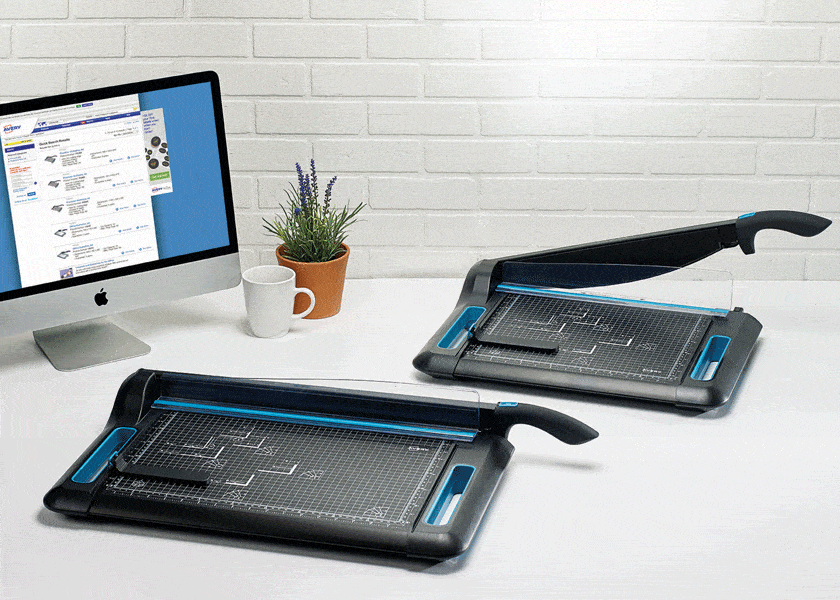Is your business sitting on a goldmine of customer feedback, waiting to be harnessed effectively for the development of a market-leading product that surpasses competitors? Customer feedback often remains an untapped resource, yet it should be the cornerstone of your product development strategy. Even if you don’t have feedback from your own existing product range, there’s still a untapped resource in customer reviews of competitor products, or reviews or your development prototypes that you can utilise to inform your new product development strategy.
In this blog post, we’ll delve into the significance of incorporating customer feedback into your product development approach, exploring how it can enhance your market position, boost sales, reduce returns, and strengthen brand loyalty.
The initial step in a successful product development strategy is utilising customer feedback to create a comprehensive design brief. With extensive experience working alongside nearly 500 clients to pioneer innovative products, we understand the vital role that customer insights play in shaping new products. In the first part of this post, we will explore various sources for obtaining a thorough understanding of what your new product should entail and how to transform this insight into an effective design brief.
The latter half of this article is equally critical, as we delve into the integration of customer feedback within the product development process. We conclude with a remarkable case study, drawing essential lessons from a highly successful multinational company and gaining insights from their journey.
Crafting a User-Centric Design Brief: The Foundation of Effective Product Development
If you already possess a wealth of customer feedback on your current products, it may be that these reviews, whether positive or negative, are driving your focus toward new product development. However, if this doesn’t apply to you, simply skip the initial paragraphs and proceed for further insights that don’t necessitate a pre-existing product with numerous reviews. For those with a treasure trove of customer insights, ensure that these have been diligently analysed, along with any feedback and complaints received by your customer service department. Examining product return records can reveal trends that should be addressed in your new product, potentially reducing your return rate and making the investment in new product development financially rewarding. Don’t overlook the valuable input from your sales team, as they often possess valuable knowledge to contribute.
In cases where more clarity is needed, consider reaching out to existing customers for additional insights. While this must be done in compliance with GDPR and privacy regulations, it can yield further valuable information. If you lack customer details, consider implementing systems to facilitate direct feedback to your business, complete with suitable agreements to contact customers for follow-ups when necessary.
We once developed a new electric wheelchair for a company called Spring Chicken. Their sales manager’s active involvement in most product development meetings seemed unusual at first, but our team quickly recognised its benefits and recommended this approach to other clients. There’s often no one better equipped to understand what customers are willing to pay for and what captures their interest. As a side benefit, your sales team will be highly motivated to sell the resulting new product since they’ve been part of its development.
Product reviews from reputable organisations like Which? are invaluable resources, as they establish the key criteria for product reviews. You can effectively capitalise on the work done by industry professionals by carefully analysing their assessments, gaining deep insights into the features and qualities valued by consumers. This information will be crucial when these organisations review your product post-development and launch.
When we developed our pushchair product, launched with John Lewis, we extensively reviewed various sources, such as Mumsnet and Which?, to create a design brief that prioritised key elements like weight, folded dimensions, and additional features.
Beyond product reviews, incorporating specific focus groups into your research strategy offers a wealth of qualitative feedback. Engaging directly with potential customers allows you to delve deeper into their preferences, needs, and pain points. This hands-on approach fosters collaboration, solidifying the bond between your brand and your audience.
To complete the picture of your customers’ desires, consider conducting primary market research through surveys. This quantitative data will provide you with a broader understanding of the market landscape, helping you identify trends, preferences, and areas for improvement. These survey insights become the building blocks of your design brief, ensuring your new product not only meets but exceeds customer expectations.
By embracing customer insights from various sources, including trusted product reviews, focus groups, and surveys, you can create a product that resonates deeply with your target audience. Combining these different perspectives allows you to weave together a detailed, user-focused design brief that sets your project on the right course from the outset. However, this is just the beginning…
Leveraging Customer Insights Throughout the Product Development Process
To ensure a perfect product-market fit, involving customers in the decision-making process during product development is a game-changer. Gone are the days when founders relied solely on their opinions or emotions to drive crucial decisions. By actively engaging customers and gathering their feedback throughout the development journey, founders can make informed choices based on concrete data. This article explores the value of customers reviewing prototypes, testing product samples, and providing feedback on styling directions and design concepts. It emphasises the importance of leveraging customer insights to guide decision-making and create products that genuinely resonate with their desires.
In addition to reviewing prototypes, testing product samples is another effective strategy for gathering customer feedback. By placing actual product samples in the hands of potential customers, founders gain insights into how the product performs in real-life scenarios. Customers can provide feedback on aspects such as quality, durability, ease of use, and overall satisfaction. This data-driven approach enables founders to make informed decisions about product improvements or refinements before launching to the wider market, potentially saving costs on expensive tooling, production setup, and initial batch orders.
In earlier stages, involving customers in reviewing styling directions and design concepts adds an extra layer of insight. By presenting visual representations of design concepts, founders can gauge customers’ emotional responses and preferences. Customers’ feedback on visual aesthetics, colour schemes, and overall design direction contributes to a more refined and appealing final product.
By actively involving customers in the development process, founders harness the power of data-driven decision-making. The objective feedback gathered from customers reviewing prototypes, testing product samples, and providing input on design concepts helps founders make informed choices grounded in customer preferences and needs. This collaborative approach ensures that the final product not only aligns with the founder’s vision but also resonates deeply with the target audience. It requires a degree of humility from the founder and the management team, acknowledging that they don’t have all the answers. At D2M, our design team also takes this user-centric approach, steering the design direction while remaining open to valuable input.

Case Study: Avery Dennison’s User-Centric Approach to Product Development
At D2M, we had the privilege of working closely with Avery Dennison, a leader in the office supplies industry, to design a cutting-edge range of trimmers and guillotines. This collaboration was transformative, as it taught us the power of user-centric design and forever changed the way we approach product development. In this case study, we delve into Avery Dennison’s process and how their meticulous attention to customer feedback led to the creation of a highly successful product range that continues to outshine its competitors even after a decade.
Avery Dennison’s design journey began by immersing themselves in customer feedback. They meticulously collected insights from their salespeople, major distributors, and retail customers, gaining a comprehensive understanding of the pain points, desires, and preferences of end-users. However, they didn’t stop there. To further refine their understanding, Avery Dennison took the bold step of conducting focus groups directly with teachers, the actual end customers who use their products in schools. This deep dive into the end-user’s perspective revealed a critical insight: class sizes were increasing, necessitating a paper cutting guillotine with a sheet capacity of 35+ to accommodate larger volumes. Armed with these valuable insights, Avery Dennison collaborated with us at D2M to consolidate all the research and create a detailed design brief.
But the involvement of customers did not end there. Throughout the development process, Avery Dennison continued to engage with their target audience by conducting focus groups to review style directions, initial renders, and product samples. This iterative approach allowed them to continuously refine and hone the product, ensuring it aligned precisely with the desires and needs of the end-users.
During this collaboration, D2M’s team added innovative features to enhance the product’s functionality and appeal. However, Avery Dennison’s commitment to prioritising customer feedback remained steadfast. They carefully evaluated each proposed innovation, weighing the potential benefits against the associated costs. As a result, some features were eliminated due to cost considerations, ensuring that the final product delivered maximum value to their customers.
The outcome of this collaborative and data-driven approach was nothing short of remarkable. The new product range, built upon the foundation of user-centric design principles, quickly gained traction in the market. It not only met but exceeded customer expectations, outselling competitor products and establishing itself as the go-to choice for schools, offices, and beyond. Even after a decade, Avery Dennison’s product range continues to captivate customers and maintain its competitive edge, a testament to the power of involving end-users throughout the development process.
User Centric design checklist
Here’s a useful checklist for your business in creating a customer-focused design brief:
- Collate all relevant customer reviews on your current products.
- If necessary, delve deeper with specific customer interviews to understand feedback to a greater extent.
- Study all external reviews from Which?, industry-specific review websites, retailer websites, e-commerce platforms, Trustpilot, etc.
- Analyse the reviews for any noticeable trends.
- Collate reviews on competitor products.
- Compare them against the reviews your products are receiving.
- Commission an analysis and a summary report.
- Create hypotheses from the summary report and test them through specific customer interviews or focus groups.
- Draw conclusions and formulate them into a specific design brief for a new product that addresses relevant issues and results in a market-leading product.
- Work with a professional, experienced design team to develop a product that addresses these concerns while considering the cost implications of the solution developed at the earliest opportunity.
In product development, success hinges on adaptability, innovation, and meeting customer needs. We’ve explored how integrating customer insights can revolutionise your business, enhancing market positioning, boosting sales, and fortifying brand loyalty.
It all starts with a comprehensive design brief informed by customer feedback. Diligent analysis of reviews, interviews, and external assessments uncovers invaluable trends.
But it doesn’t end there; actively involving customers throughout the process ensures your innovations resonate with their desires. Avery Dennison’s case study exemplifies the transformative impact of this approach.
As you embark on your own journey, remember success comes to those who listen, learn, and leverage data-driven decision-making. Our checklist provides a roadmap for creating a customer-focused design brief and achieving market leadership.
Are you ready to take the next step and utilise your existing customer reviews to develop an innovative new product that positions you ahead of the competition? Get in touch with our team today to explore how we can partner with you to make this a reality.
